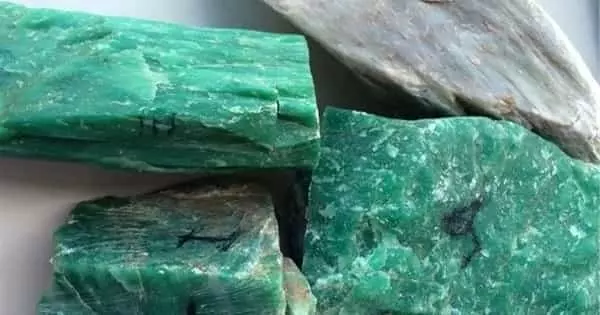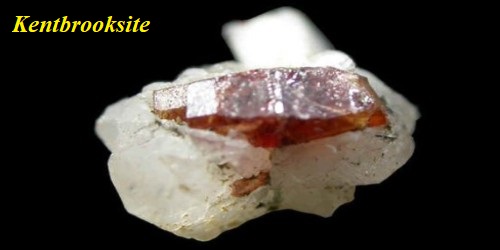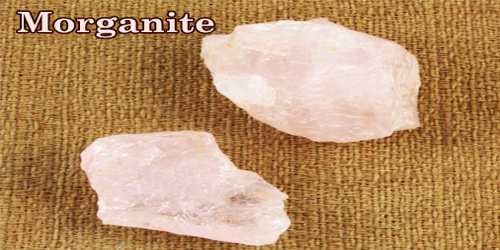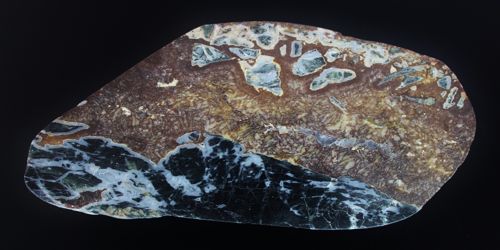Nephrite is a calcium, magnesium, and iron-rich amphibole mineral similar to tremolite or actinolite (aggregates of which also make up one form of asbestos). It is a gem-quality silicate mineral in the amphibole tremolite–actinolite series. Ca2(Mg, Fe)5Si8O22(OH)2 is the chemical formula for nephrite. It is one of two mineral species known as jade. Jadeite, a type of pyroxene, is another mineral species known as jade. While nephrite jade is mostly grays and greens (with a few yellows, browns, and whites thrown in for good measure), jadeite jade, which is more rare, can also contain blacks, reds, pinks, and violets.
Nephrite jade is a decorative stone that is used in carvings, beads, and cabochon cut gemstones. Wyoming’s official state mineral is nephrite. It is a rock made up primarily of massive microcrystalline to cryptocrystalline felted amphiboles from the tremolite – actinolite series.
Nephrite is a compact tremolite or actinolite that is the commoner and less valuable kind of jade and that varies in color from white to dark green or black.
Nephrite jade is a mineral that is made up of dense, fibrous crystal masses. It is the less valuable but more common of the two types of jade, and it is typically found as translucent to opaque, compact, dense aggregates of finely interfelted tufts of long, thin fibers. It is not the same as jadeite and comes in a variety of beautiful colors such as yellow, gray, black, and green.
General Information
- Category: Inosilicate
- Formula (repeating unit): Ca2(Mg,Fe)5Si8O22(OH)2
- Crystal system: monoclinic
- Color: Translucent to opaque and often mottled. Light to dark green, yellow to brown, white, gray, black.
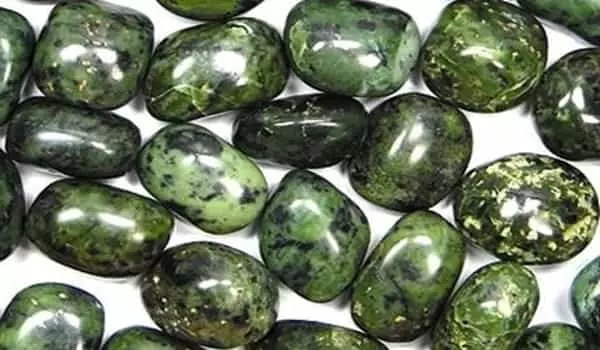
Properties
Nephrite is found in a translucent white to very light yellow form known as mutton fat jade in China, an opaque white to very light brown or gray form known as chicken bone jade in China, and a variety of green colors.
- Crystal habit: massive
- Fracture: splintery to granular
- Mohs scale hardness: 6 – 6.5
- Luster: dull
- Specific gravity: 2.95 (+.15, -.05)
- Polish luster: vitreous to greasy
- Optical properties: Double refractive with anomalous aggregate reaction
Occurrences
Nephrite is found in rocks that have been regionally metamorphosed and have a low grade. The primary source of modern lapidary nephrite is Western Canada. Pre-1800 China, New Zealand, the Pacific and Atlantic coasts of North America, Neolithic Europe, and Southeast Asia were the most common places to find nephrite jade. It was discovered in 1960 in Mashaba, Rhodesia, and was the first discovery on the African continent. The mineral was discovered in 1965 near Hualien, Taiwan.
